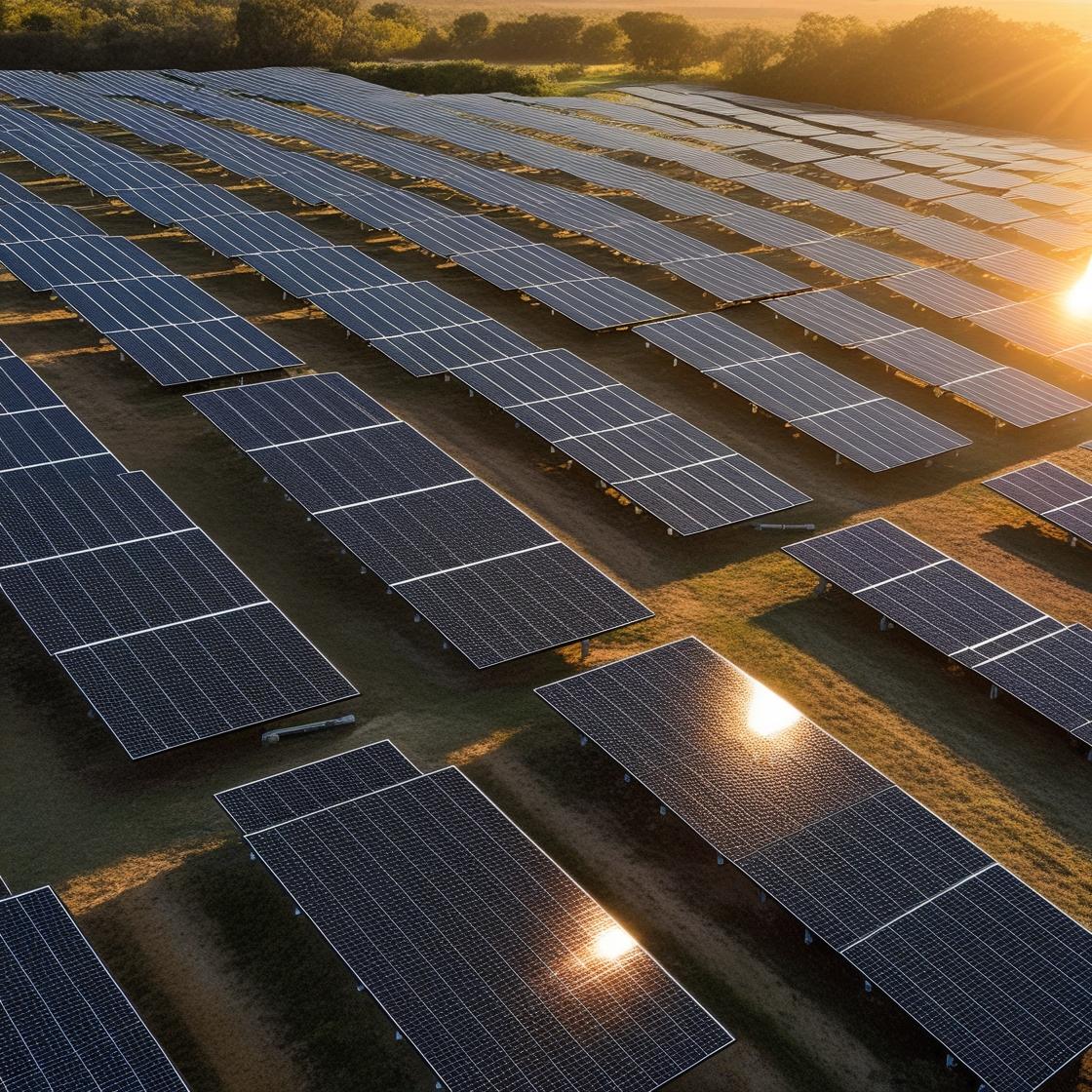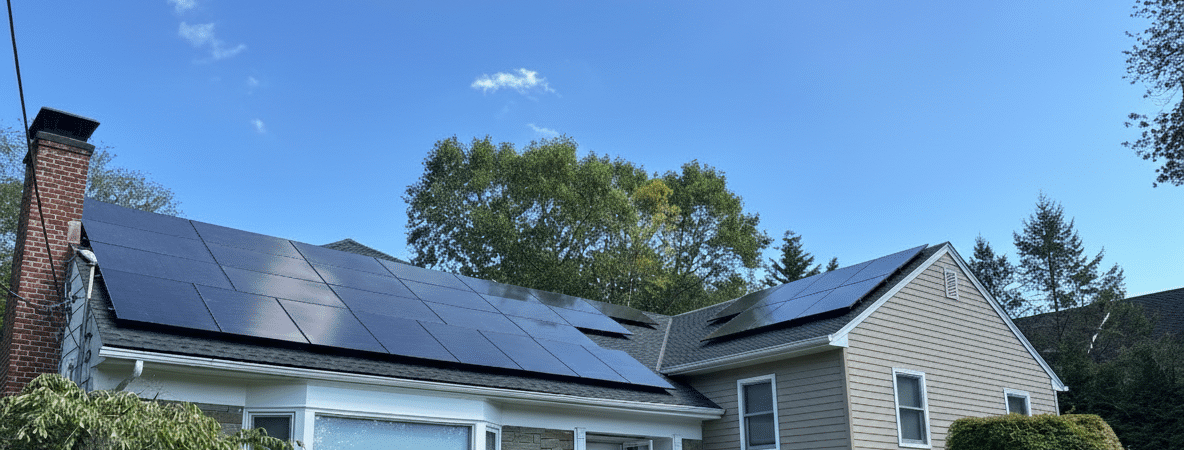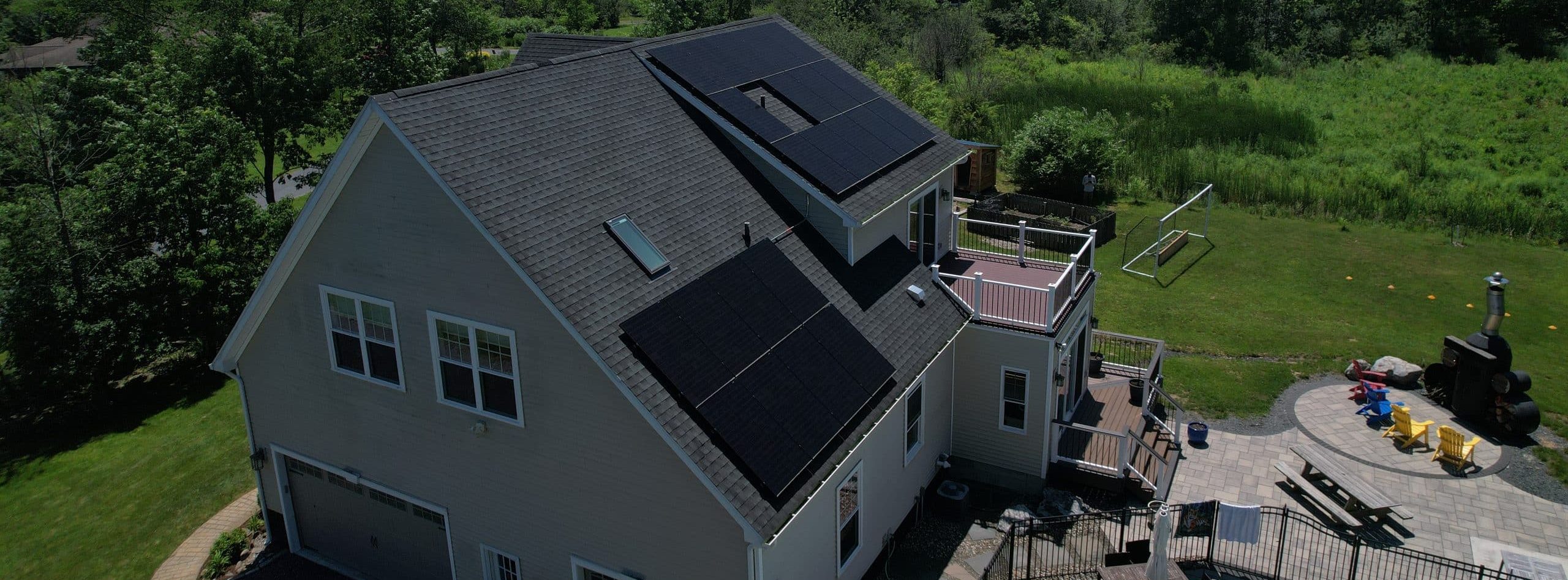Did you know that according to CNBC, roughly only 40% of America’s power grid uses clean energy, while the remaining 60% relies on fossil fuels, causing climate change and pollution? One effective way to reduce the dependency on fossil fuels is solar panel installation on your residential property, but it is not always possible. Reasons include not owning a home, lacking sunny space, or upfront expenses. Yet, there’s a solution: community solar. This means sharing a solar setup with others so you all enjoy eco-friendly and cost-efficient energy, even if your roof isn’t involved.
The concept of community solar offers a promising alternative that enables individuals to benefit from solar energy. In this blog, we’ll explore how does community solar work and what it involves to offer clean and affordable energy to a variety of people.
Community Solar Explained
Community solar refers to a shared renewable energy initiative that collectively allows multiple individuals, commercial spaces, or organizations to benefit from a solar power installation. Community solar, also called solar farms or gardens, lets many people enjoy the advantages of a single solar energy system. This setup provides energy for hundreds and thousands of homes in the neighborhood. It’s for those who can’t install panels due to space, cost, or property type. By joining community solar, individuals can access clean energy, gain bill credits, and create awareness about a sustainable and clean environment.
This kind of setup is technically called a photovoltaic power station. Community solar projects are also commonly referred to as solar power plants, solar farms, gardens, solar parks, roofless solar, and shared solar. All these terms mean the same thing: a large collection of solar panels producing power for a specific region.
How Does Community Solar Work?
In community solar projects, the electricity is generated from the sunlight and is passed through an electric meter to the utility grid. People or homeowners who join the community solar project pay a monthly fee for a part of this power generated.
The local electricity company compensates the community solar provider for the produced energy. Subscribers get a credit from their subscription, usually applied to their monthly electricity bill. This helps lower their overall electricity expenses.
There are 3 simple steps in which a community solar setup functions:
- A local community solar project is created to help a group of people/homeowners who desire clean energy. The power produced by the solar farm goes to the grid, and you receive renewable energy credits for this power.
- Your energy credits lower your monthly utility bill, the one you receive from your usual electricity provider.
- The solar developer will send you a separate bill for your renewable energy credits, which is usually less and leads to cost savings.
Understanding Community Solar
Community solar makes it possible for individuals and businesses to benefit from solar energy without installing panels on their property. Here’s how it works:
Participating in Community Solar
When you join a community solar project, you contribute to a shared solar farm. This arrangement allows you to either purchase power directly or invest in the solar setup. Here’s how these options break down:
- Buying Electricity:
- Flat Rate Purchase: Secure a specific amount of electricity at a price lower than typical utility rates. This does not require you to own any part of the solar array.
- Ownership and Investment:
- Panel Ownership: Buy ownership in a section of the solar farm. This investment allows you to receive credits or discounts on your energy bill based on the electricity generated by your panels.
Types of Community Solar Plans
Community solar programs generally come in two formats:
- Ownership Model:
- Participants invest in a number of panels or a share of the solar project.
- Returns come via credits that offset your regular electricity bill in accordance with the energy generated by your share.
- Subscription Model:
- Subscribers pay a lower rate for power than they would from standard utility services.
- This model doesn’t confer ownership, but it does provide a steady monthly discount on your electricity costs.
Choosing the Right Option
Your decision to participate through ownership or subscription depends on your financial goals and energy needs. Ownership requires upfront investment but offers potentially larger savings. Subscriptions offer straightforward savings without initial costs.
By participating in community solar, you’re supporting renewable energy and possibly saving money in the process. It’s a flexible way to contribute to a sustainable future, regardless of your living situation.
Benefits of Solar Community
The National Renewable Energy Laboratory states that almost half households and businesses can’t have rooftop solar. This might be because they rent homes, their roofs aren’t suitable due to shading or size, or upfront costs are an issue. Community solar makes solar energy benefits accessible to everyone, regardless of their ability to set up panels on their roofs.
This means lower electricity costs for households and businesses, especially in places where solar is cheaper than fossil fuels.
Financial Benefit Through VNM
Community solar setup uses a policy known as “virtual net metering” (VNM). Like net metering for home solar, virtual net metering lets households, businesses, or nonprofits receive credits from a distant renewable energy project. Just as net metering lets your rooftop solar cut grid electricity when the sun’s not shining, virtual net metering lets you balance grid power use with solar energy from a distant place—hence “virtual.”
Financial Advantages for Participants
One of the standout benefits for individuals participating in community solar is the potential for significant savings on electricity bills. Through a system known as virtual net metering, participants can harness solar energy that is produced offsite. This means they can reduce their reliance on traditional electricity sources and, in turn, enjoy lower monthly costs. Moreover, these savings are not just fleeting; they can be locked in, offering financial predictability for years to come.
Utility Company Advantages
Community solar doesn’t just benefit consumers—it also plays a crucial role for utility companies. By strategically placing solar gardens where they’re needed most, utilities can bolster the overall stability of the power grid. This thoughtful placement reduces the need for costly maintenance and repairs, saving both time and resources.
Furthermore, community solar initiatives aid utility companies in meeting state-mandated renewable portfolio standards. As states increasingly push for sustainable energy solutions, community solar becomes a practical way for utilities to integrate renewable energy into their grids, aligning with legislative requirements while promoting environmental stewardship.
Free to Join
Joining community solar is cost-free and doesn’t require any initial expenses. It lets you enjoy the perks of clean solar energy without the upfront investment and the inconvenience of panel installation. Even if you move within the same region, you can bring your community solar subscription. You won’t need to leave your solar panels behind or install a new set in your home, which is a big advantage.
Fights Global Warming
Community solar plays a big part in making our environment cleaner. It swaps fossil fuels for solar energy, which is great for the environment. This change helps with less carbon emissions, cleaner air, and fewer air pollutants. As per EPA, a standard 5MW solar project prevents emitting CO2, equivalent to burning 5 million pounds of coal. That’s like removing over 950 cars from the road annually!
Adjustable Solar Power
If you put solar panels in your home or business, they produce a set amount of power. But you can change how much power you want in a community solar farm without adding more panels. It’s flexible, and you don’t need to keep installing new panels. You will receive the power as per the
Overall, the community solar review is positive but, it is important to know that the community solar financing incentive of income tax credit (ITC) is unavailable in this setup.
Understanding Community Solar Payments
When you participate in a community solar program, your payment process involves a few key players, and it’s structured to offer potential savings. Here’s how it typically works:
- Payment to the Subscriber Organization: The first step is making payment to the organization responsible for your community solar subscription. You can choose to pay this cost upfront or spread it over a designated period.
- Information Exchange with Utility Provider: The subscriber organization communicates with your utility provider to report the monthly electricity generation from your share of the community solar system. This exchange of information is crucial for credit calculation.
- Determining Your Power Bill Credit: The utility provider uses the above information to calculate credits for your power bill. These credits vary by state and can depend on your utility company. Typically, they are calculated based on how many kilowatt hours (kWh) your solar share produces.
- Monthly Billing: Expect to receive two bills each month—one from your community solar organization and another from your utility company. The bill from your utility will reflect the actual energy you consumed, minus the credits earned from your solar share.
- Potential Savings: The overall goal of community solar is to reduce your total energy expenditure. Ideally, your combined costs from both bills should be less than what you previously paid for traditional electricity. However, savings can vary based on your location, utility provider, and the specific terms of your solar subscription.
By understanding the basic flow of payments and credits, you can better manage your community solar involvement and potentially enjoy reduced electricity costs.
Is Community Solar Worth It?
Absolutely, community solar is worth considering as it offers a multitude of benefits.
Benefits for Individual Consumers
- Cost Savings: Participants often see reductions in their electricity bills due to the lower costs associated with shared solar energy production.
- Accessibility: Even those unable to install solar panels on their rooftops can participate in renewable energy initiatives.
- Simplicity: By subscribing to a community solar program, both homeowners and renters can effortlessly contribute to the renewable energy shift.
Economic and Environmental Advantages
- Grid Stability: As more individuals and organizations participate, power grids become more stable and efficient.
- Economic Growth: Development of solar projects creates jobs and stimulates local economies.
- Environmental Impact: Reducing reliance on traditional fuels cuts down on environmental pollution and carbon footprints.
Challenges and Considerations
The primary challenge community solar faces is availability, as the number of projects is still growing. However, as more facilities are built and consumer demand rises, availability is improving. This growth also drives down construction costs, fostering a cycle of increased accessibility and adoption.
In summary, community solar offers substantial economic, environmental, and individual benefits. As the availability of projects increases, it’s an increasingly viable option for anyone looking to save on energy costs and contribute to a sustainable future.
What Community Solar Is Not
Community solar often gets confused with other renewable energy options, but it’s important to understand what it isn’t:
Not Group Purchasing: Unlike group purchasing agreements where families or businesses buy individual solar panels at a discount, community solar brings people together to share a single, centrally located solar system. Participants benefit collectively rather than owning separate systems.
Not Green Power Programs: While green power programs let customers purchase electricity generated from renewable sources, they often come with extra costs and don’t necessarily lead to new power development. Community solar aims to cut down costs for its members by specifically reducing their energy bills, unlike green power plans which sometimes carry a premium.
Not Crowdfunding: Some platforms offer opportunities to invest in solar, but these are purely financial endeavors. You’ll see returns on your investment, but they won’t directly reduce your electricity bill. Community solar, however, provides direct savings as it’s designed to lower actual energy costs for its subscribers.
Conclusion
Now we know how community solar works and the solar benefits it brings to all in a community: renters, owners, businesses, schools, and anyone with an electricity bill. Overall, in a community solar setup, all residents collectively use energy from a big solar setup called a solar farm. Enrolling in this program gives you solar credits that cut down your electricity expenses. Apart from cutting electricity costs, it is good for the environment and makes the grid stronger. It’s a win-win-win for everyone.
If you are looking for solar panel installation from a reliable company, feel free to get in touch with us at Infinity Energy as we aim to enable communities to flourish in an environmentally aware world.












